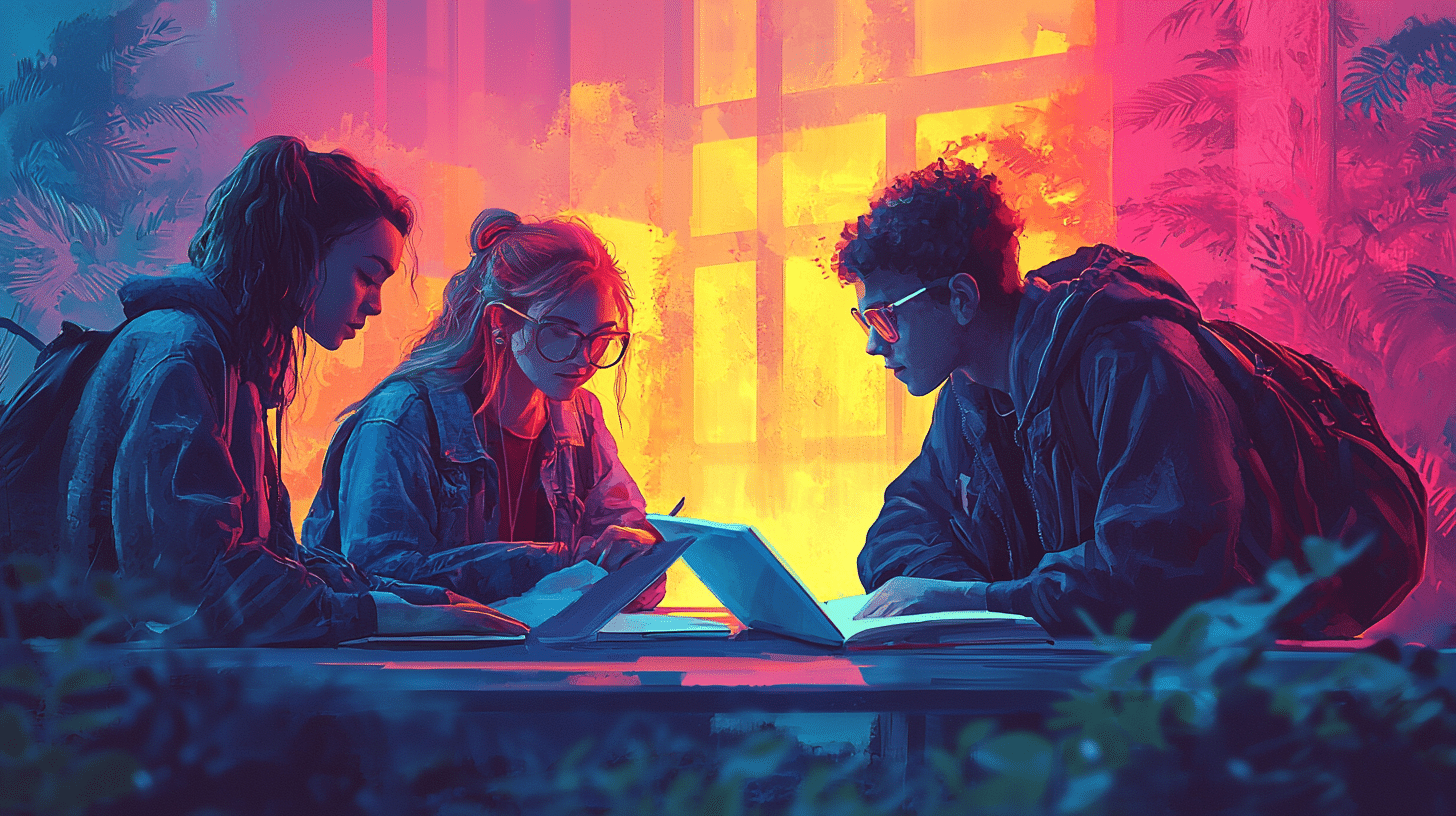Urdu, the national language of Pakistan and one of the 22 scheduled languages of India, is known for its rich vocabulary and poetic resonance. This beautiful language is a blend of Persian, Arabic, and Turkish influences, and it offers a multitude of words to describe various aspects of life, including lighting and ambiance. In this article, we will explore some captivating Urdu words that perfectly encapsulate the nuances of lighting and ambiance, adding a touch of elegance and depth to your expressions.
Noor (نور)
One of the most common and versatile words in Urdu to describe light is Noor (نور). Derived from Arabic, it means “light” or “radiance.” This word is often used in both literal and metaphorical contexts. For instance:
– Literal: “Kamray mein noor bhar gaya,” which translates to “The room filled with light.”
– Metaphorical: “Uske chehre par noor tha,” meaning “There was a glow on her face.”
Chirag (چراغ)
Another essential word in the Urdu lexicon for light is Chirag (چراغ). It specifically refers to a lamp or a source of light. This word is often used in poetry and literature to symbolize hope, guidance, or enlightenment.
– “Chirag-e-dil jalta raha,” which means “The lamp of the heart kept burning.”
– “Raat ke andheray mein chirag jalaya,” translating to “Lit a lamp in the darkness of the night.”
Deepak (دیپک)
While Chirag is more commonly used, another word that carries a similar meaning is Deepak (دیپک). This word, of Sanskrit origin, is also used to describe lamps or small lights.
– “Mandir mein deepak jal raha hai,” meaning “A lamp is burning in the temple.”
Roshni (روشنی)
The word Roshni (روشنی) is synonymous with “light” and is often used to describe the general presence of light in an area. It can also be used in a figurative sense to indicate enlightenment or clarity.
– “Ghar mein roshni ho gayi,” which translates to “The house became illuminated.”
– “Uski baaton mein roshni thi,” meaning “There was clarity in his words.”
Ujala (اجالا)
Ujala (اجالا) refers to brightness or illumination, particularly the kind that dispels darkness. This word is often used to describe the break of dawn or any situation where darkness is replaced by light.
– “Subah ka ujala,” which means “The brightness of the morning.”
– “Andheray mein ujala kar diya,” translating to “Brightened the darkness.”
Saaya (سایہ)
While discussing light, it is equally important to consider its counterpart, shadow. The Urdu word for shadow is Saaya (سایہ). It is often used to describe the ambiance of a place and can carry both positive and negative connotations.
– Positive: “Darakht ka saaya thanda tha,” meaning “The tree’s shadow was cool.”
– Negative: “Ghar par afsos ka saaya tha,” translating to “The house was overshadowed by grief.”
Dhundhla (دھندلا)
To describe a dim or unclear light, the word Dhundhla (دھندلا) is often used. It conveys a sense of obscurity or faintness, whether literal or metaphorical.
– “Dhundhle roshni mein kuch nazar nahi aaya,” which means “Nothing was visible in the dim light.”
– “Uske armaan dhundhle par gaye,” translating to “His dreams became unclear.”
Chamak (چمک)
Chamak (چمک) refers to brightness or shine, often used to describe something that gleams or glows. This word can be applied to both objects and people to indicate a dazzling quality.
– “Sitaron ki chamak,” meaning “The shine of the stars.”
– “Uski ankhon mein chamak thi,” translating to “There was a sparkle in her eyes.”
Jagmag (جگمگ)
Similar to Chamak, the word Jagmag (جگمگ) also denotes a twinkling or glittering light. However, it is often used to describe a more lively or festive ambiance.
– “Sheher jagmag kar raha tha,” which means “The city was glittering.”
– “Diwali par ghar jagmag ho gaya,” translating to “The house glittered on Diwali.”
Andhera (اندھیرا)
No discussion of light would be complete without mentioning darkness. The Urdu word for darkness is Andhera (اندھیرا). This term is used to describe the absence of light and can be employed in both literal and figurative senses.
– Literal: “Kamray mein andhera tha,” meaning “There was darkness in the room.”
– Figurative: “Uski zindagi mein andhera tha,” translating to “There was darkness in his life.”
Gehra (گہرا)
Gehra (گہرا) is a word used to describe depth, often in the context of color or ambiance. It can be used to describe a deep shade or a profound atmosphere.
– “Gehra neela rang,” which means “Deep blue color.”
– “Gehra sukoon,” translating to “Profound peace.”
Halka (ہلکا)
To describe something light or faint, the word Halka (ہلکا) is used. This can apply to colors, sounds, or even lighting.
– “Halka peela rang,” meaning “Light yellow color.”
– “Halka roshni,” translating to “Faint light.”
Roshan (روشن)
Roshan (روشن) is an adjective used to describe something that is bright or illuminated. It can also describe a person who is enlightened or wise.
– “Roshan kamra,” meaning “Bright room.”
– “Woh ek roshan dimagh hai,” translating to “He is an enlightened mind.”
Munawwar (منور)
Similar to Roshan, the word Munawwar (منور) also means illuminated or bright. It is often used in a poetic or literary context to describe a person or an object that shines brightly.
– “Munawwar chehra,” which means “Illuminated face.”
– “Sheher munawwar ho gaya,” translating to “The city became illuminated.”
Chiraghaan (چراغاں)
Chiraghaan (چراغاں) refers to a display of lights, often used to describe festive decorations or celebrations where multiple lamps or lights are lit.
– “Eid par chiraghaan kiya gaya,” meaning “A display of lights was arranged on Eid.”
– “Diwali par ghar chiraghaan se roshan ho gaya,” translating to “The house was illuminated with a display of lights on Diwali.”
Qandil (قنديل)
The word Qandil (قنديل) refers to a lantern or a decorative light. It is often used to describe traditional or ornate lighting, adding a touch of elegance and history.
– “Bazaar mein qandil latak rahe thay,” which means “Lanterns were hanging in the market.”
– “Qandil ki roshni,” translating to “The light of the lantern.”
Sehra (صحرا)
Sehra (صحرا) is a word that means “desert,” but it is often used in a metaphorical sense to describe a vast, empty, and often luminous space. It can be used to set a particular kind of ambiance or mood.
– “Sehra ki tanhai,” meaning “The solitude of the desert.”
– “Sehra ki roshni,” translating to “The light of the desert.”
Zulmat (ظلمت)
The word Zulmat (ظلمت) is used to describe profound darkness or gloom. It is often employed in a poetic context to convey deep sorrow or despair.
– “Zulmat mein kho gaya,” which means “Lost in darkness.”
– “Zulmat bhari raat,” translating to “A night filled with gloom.”
Pur-noor (پرنور)
Pur-noor (پرنور) is an adjective that means “full of light” or “radiant.” It is used to describe something or someone that is glowing or filled with light.
– “Pur-noor chehra,” meaning “Radiant face.”
– “Pur-noor manzar,” translating to “Radiant scene.”
Pur-sukoon (پرسکون)
While not directly related to light, Pur-sukoon (پرسکون) describes a peaceful or serene ambiance. It is often used to set the mood or describe an atmosphere that is calming.
– “Pur-sukoon raat,” which means “Peaceful night.”
– “Pur-sukoon manzar,” translating to “Serene view.”
Pur-asmaan (پراسمان)
Pur-asmaan (پراسمان) is used to describe a sky filled with stars or light, often conveying a sense of wonder or beauty.
– “Pur-asmaan raat,” meaning “Star-filled night.”
– “Pur-asmaan manzar,” translating to “Star-filled scene.”
Pur-josh (پرجوش)
Another word that sets the ambiance is Pur-josh (پرجوش), which means “enthusiastic” or “lively.” It is often used to describe a vibrant and energetic atmosphere.
– “Pur-josh mehfil,” which means “Enthusiastic gathering.”
– “Pur-josh shahar,” translating to “Lively city.”
Gulzar (گلزار)
Gulzar (گلزار) is a word that means “garden” but is often used to describe a place that is flourishing and full of life. It can be used to set a picturesque and lively ambiance.
– “Gulzar jaisa manzar,” meaning “A scene like a garden.”
– “Gulzar shahar,” translating to “Flourishing city.”
Gulshan (گلشن)
Similar to Gulzar, the word Gulshan (گلشن) also means “garden” and is used to describe a beautiful, lush, and vibrant place.
– “Gulshan ki bahar,” which means “The spring of the garden.”
– “Gulshan ka manzar,” translating to “The view of the garden.”
Mehfil (محفل)
The word Mehfil (محفل) refers to a gathering or an assembly, often used to describe a social event filled with light, joy, and conversation. It sets an ambiance of festivity and warmth.
– “Mehfil-e-shayari,” meaning “A gathering of poetry.”
– “Mehfil roshan thi,” translating to “The gathering was illuminated.”
Jamalo (جمالو)
Jamalo (جمالو) is a word that describes a festive or joyous ambiance, often associated with celebrations and happiness.
– “Jamalo ki raat,” meaning “A night of celebration.”
– “Jamalo ka manzar,” translating to “A scene of festivity.”
Urdu is a language that offers a rich palette of words to describe lighting and ambiance. From the radiant Noor to the profound Zulmat, each word carries its own unique charm and depth. By incorporating these words into your vocabulary, you can add a touch of elegance and sophistication to your expressions, capturing the beauty and complexity of various lighting and ambiance scenarios.

